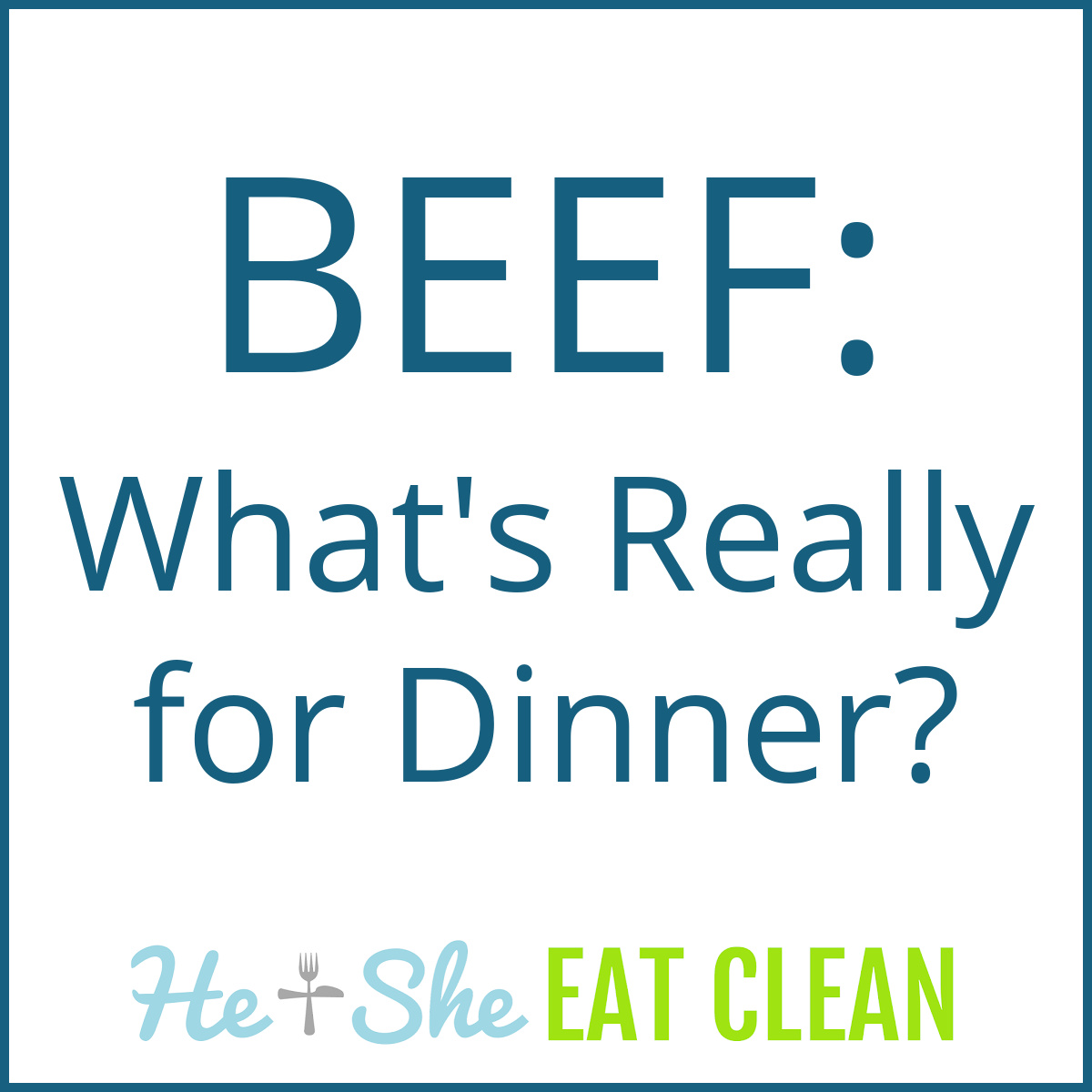Proteins are necessary building blocks to increasing our fitness levels by gaining muscle, trimming fat, and fueling our bodies for optimal functioning. Below, you will find information on how to buy quality beef, as well as suggested serving portions.
BEEF – WHAT’S REALLY FOR DINNER?
Nutritional Benefits of Beef
Vitamins/Minerals
Beef contains several vitamins and minerals that are essential to your daily nutritional intake. Beef is a good source of zinc, selenium, phosphorus, iron, and B Vitamins. Essential for optimal muscle growth, beef is the best source of carnitine and is a good source of creatine.
Calories
Due to a large number of cuts and the variance of fat in any particular beef source, it’s quite hard to provide concrete calorie counts for beef. However, below you will find a guide of approximate calorie contents in different cuts of beef.
- Ground Beef (85% Beef / 15% Fat) – 3oz portion, cooked
- 228 calories, 13g Fat, 5.1g Saturated Fat, 84mg Cholesterol
- Ribeye Steak – 9oz portion, grilled
- 585 calories, 29g Fat, 12g Saturated Fat, 207mg Cholesterol
- Filet Mignon – 6oz, cooked
- 320 calories, 18g Fat, 6g Saturated Fat, 85 mg Cholesterol
Concerns Related to Beef Consumption
Hormones
Most commercially available Beef (that which you find in your grocer’s meat section), is fed growth hormones during most stages of their lives. To allow for sufficient growth of a calf in optimal time, cattle are fed a mixture of large amounts of grain feed and protein supplements. According to Dr. Heise, a Chiropractic Doctor from Winter Park, FL, “Various combinations of hormones, estradiol, progesterone, and testosterone, and the synthetic hormones, zeranol, and trenbolone acetate, may be given to cattle during their growing cycle. Another hormone, melengestrol acetate, may also be added to cattle feed to ‘improve weight gain and feed efficiency.’” If a calf can gain 1400 lbs in a matter of a little over one year to 18 months, what potential effects could these hormones have on your weight loss goals?
What can you do to guard against this?
Look for hormone-free meats – they are available in many mainstream supermarkets and butcher shops. We are not advocating that you stop eating beef, just look at your labels and know what is in your foods before purchasing!
Antibiotics
Over 50% of antibiotic usage can be traced to usage for animal consumption. Due to overcrowding and increased opportunity for disease, antibiotics are added to cattle feed to prevent such diseases. However, the large amounts of medicine that are fed to these animals increase the risk of passing the chemicals to those that consume such meat.
What can you do to guard against taking in these chemicals?
Look for antibiotic-free meats – they are often available in conjunction with hormone-free meats and are available in many mainstream supermarkets and butcher shops. Again… we are not advocating that you stop eating Beef, just look at your labels and know what is in your foods before purchasing!
Suggested Servings
Pry your hands off of your mouse or keyboard. Look down at the palm of your hand. That’s one of your best tools for determining how much protein or meat you should consume in one sitting! A palm-sized portion of beef is perfect for your next meal.
Just how much beef should you have per week? A 2007 study by the World Cancer Research Fund suggested no more than 11oz or 300g of cooked beef per week.
Additional Information YOU may Want to Know:
Cuts of Beef
There are many, many cuts of beef that you should be aware of as you maneuver around your local butcher, farmers market, and grocery store. Know which area your meat is coming from so that you can choose an optimal cut for your cooking method.
- Chuck – Pot Roast, Short Ribs and Ground Chuck (typically used for hamburger meat)
- Ribs – Prime Rib and Ribeye Steaks
- Short Loin – T-Bone Steak, Porterhouse Steak, and New York Strip Steaks
- Sirloin – Sirloin Steaks, Ground Sirloin, Tri-Tip Roast
- Breast/Foreshank – Crosscut Shank, Brisket, Ground Beef
- Plate – Ground Beef
- Flank – Flank Steak, Skirt Steak, and London Broil
- Round – Rump Roast, Round Steak, and Roast
USDA Grades of Beef
- US Prime – Best quality. Small, limited amount of intramuscular fat. Higher fat content than US Choice.
- US Choice – High quality. Most commonly available beef grade. Lower fat content than US Prime.
- US Select – Lower quality typically sold at grocery stores and butcher shops. Lean and sometimes tough.
- US Standard
- US Utility
- US Cutter
- US Canner
Resources
- Wikipedia – http://en.wikipedia.org/wiki/Beef#American_primal_cuts
- About.com – http://southernfood.about.com/library/weekly/aa090802b.htm


Nidhi Kinger says
Hi! I love how informative and great your articles are. Can you recommend a list of citrus fruits and vegetables that can be used to make healthy snacks or treats? Thanks a lot!
Whitney Carlson says
That’s a great idea for a post. I will definitely work on that. Thanks, Nidhi!